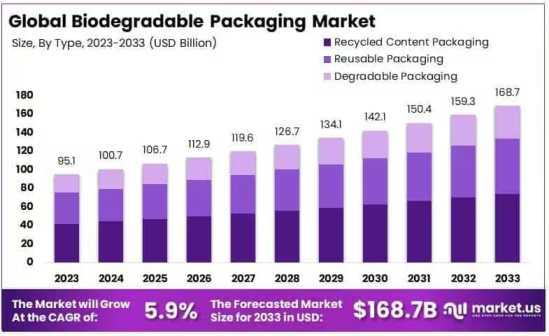How will AI in global trade reshape shipping and logistics networks?
Global trade is the backbone of our economy, and at its heart lies the shipping and logistics industry—a complex web of ports, routes, warehouses, and regulations. Now, AI is stepping in as the unseen orchestrator, optimizing flows of goods, reducing delays, and making supply chains smarter than ever.
🤖 From predicting demand to rerouting cargo in real time, AI is transforming global logistics into a dynamic, adaptive network that can keep pace with shifting economies and disruptions.
🔍 𝐇𝐞𝐫𝐞’𝐬 𝐡𝐨𝐰 𝐀𝐈 𝐢𝐬 𝐫𝐞𝐬𝐡𝐚𝐩𝐢𝐧𝐠 𝐠𝐥𝐨𝐛𝐚𝐥 𝐬𝐡𝐢𝐩𝐩𝐢𝐧𝐠 & 𝐥𝐨𝐠𝐢𝐬𝐭𝐢𝐜𝐬:
✅ 𝐃𝐞𝐦𝐚𝐧𝐝 𝐅𝐨𝐫𝐞𝐜𝐚𝐬𝐭𝐢𝐧𝐠
AI predicts trade flows and consumer demand, helping shippers plan routes, inventory, and port utilization with precision.
✅ 𝐑𝐨𝐮𝐭𝐞 & 𝐅𝐮𝐞𝐥 𝐎𝐩𝐭𝐢𝐦𝐢𝐳𝐚𝐭𝐢𝐨𝐧
Algorithms calculate the most efficient paths, cutting fuel costs, carbon emissions, and delivery times.
✅ 𝐀𝐝𝐚𝐩𝐭𝐢𝐧𝐠 𝐭𝐨 𝐃𝐢𝐬𝐫𝐮𝐩𝐭𝐢𝐨𝐧𝐬
Whether it’s a canal blockage, extreme weather, or geopolitical conflict, AI can reroute cargo in real time to minimize losses.
✅ 𝐒𝐦𝐚𝐫𝐭 𝐏𝐨𝐫𝐭𝐬 & 𝐖𝐚𝐫𝐞𝐡𝐨𝐮𝐬𝐞𝐬
Automation + AI coordinate crane operations, container stacking, and inventory flows, creating hyper-efficient trade hubs.
✅ 𝐅𝐫𝐚𝐮𝐝 & 𝐂𝐨𝐦𝐩𝐥𝐢𝐚𝐧𝐜𝐞 𝐌𝐨𝐧𝐢𝐭𝐨𝐫𝐢𝐧𝐠
AI scans customs data and trade documents to detect fraud, sanctions violations, and compliance risks.
📌 𝐓𝐡𝐞 𝐁𝐢𝐠 𝐏𝐢𝐜𝐭𝐮𝐫𝐞:
AI is shifting logistics from a reactive system to a predictive, adaptive one. The result: faster deliveries, reduced costs, and more resilient trade networks capable of withstanding global shocks. The future of global trade won’t just be faster—it will be smarter, greener, and AI-driven.
🔗 Read More: https://technologyaiinsights.com/
📣 About AI Technology Insights (AITin):
AI Technology Insights (AITin) is the fastest-growing global community of thought leaders, influencers, and researchers specializing in AI, Big Data, Analytics, Robotics, Cloud Computing, and related technologies. Through its platform, AITin offers valuable insights from industry executives and pioneers who share their journeys, expertise, success stories, and strategies for building profitable, forward-thinking businesses.
Global trade is the backbone of our economy, and at its heart lies the shipping and logistics industry—a complex web of ports, routes, warehouses, and regulations. Now, AI is stepping in as the unseen orchestrator, optimizing flows of goods, reducing delays, and making supply chains smarter than ever.
🤖 From predicting demand to rerouting cargo in real time, AI is transforming global logistics into a dynamic, adaptive network that can keep pace with shifting economies and disruptions.
🔍 𝐇𝐞𝐫𝐞’𝐬 𝐡𝐨𝐰 𝐀𝐈 𝐢𝐬 𝐫𝐞𝐬𝐡𝐚𝐩𝐢𝐧𝐠 𝐠𝐥𝐨𝐛𝐚𝐥 𝐬𝐡𝐢𝐩𝐩𝐢𝐧𝐠 & 𝐥𝐨𝐠𝐢𝐬𝐭𝐢𝐜𝐬:
✅ 𝐃𝐞𝐦𝐚𝐧𝐝 𝐅𝐨𝐫𝐞𝐜𝐚𝐬𝐭𝐢𝐧𝐠
AI predicts trade flows and consumer demand, helping shippers plan routes, inventory, and port utilization with precision.
✅ 𝐑𝐨𝐮𝐭𝐞 & 𝐅𝐮𝐞𝐥 𝐎𝐩𝐭𝐢𝐦𝐢𝐳𝐚𝐭𝐢𝐨𝐧
Algorithms calculate the most efficient paths, cutting fuel costs, carbon emissions, and delivery times.
✅ 𝐀𝐝𝐚𝐩𝐭𝐢𝐧𝐠 𝐭𝐨 𝐃𝐢𝐬𝐫𝐮𝐩𝐭𝐢𝐨𝐧𝐬
Whether it’s a canal blockage, extreme weather, or geopolitical conflict, AI can reroute cargo in real time to minimize losses.
✅ 𝐒𝐦𝐚𝐫𝐭 𝐏𝐨𝐫𝐭𝐬 & 𝐖𝐚𝐫𝐞𝐡𝐨𝐮𝐬𝐞𝐬
Automation + AI coordinate crane operations, container stacking, and inventory flows, creating hyper-efficient trade hubs.
✅ 𝐅𝐫𝐚𝐮𝐝 & 𝐂𝐨𝐦𝐩𝐥𝐢𝐚𝐧𝐜𝐞 𝐌𝐨𝐧𝐢𝐭𝐨𝐫𝐢𝐧𝐠
AI scans customs data and trade documents to detect fraud, sanctions violations, and compliance risks.
📌 𝐓𝐡𝐞 𝐁𝐢𝐠 𝐏𝐢𝐜𝐭𝐮𝐫𝐞:
AI is shifting logistics from a reactive system to a predictive, adaptive one. The result: faster deliveries, reduced costs, and more resilient trade networks capable of withstanding global shocks. The future of global trade won’t just be faster—it will be smarter, greener, and AI-driven.
🔗 Read More: https://technologyaiinsights.com/
📣 About AI Technology Insights (AITin):
AI Technology Insights (AITin) is the fastest-growing global community of thought leaders, influencers, and researchers specializing in AI, Big Data, Analytics, Robotics, Cloud Computing, and related technologies. Through its platform, AITin offers valuable insights from industry executives and pioneers who share their journeys, expertise, success stories, and strategies for building profitable, forward-thinking businesses.
How will AI in global trade reshape shipping and logistics networks?
Global trade is the backbone of our economy, and at its heart lies the shipping and logistics industry—a complex web of ports, routes, warehouses, and regulations. Now, AI is stepping in as the unseen orchestrator, optimizing flows of goods, reducing delays, and making supply chains smarter than ever.
🤖 From predicting demand to rerouting cargo in real time, AI is transforming global logistics into a dynamic, adaptive network that can keep pace with shifting economies and disruptions.
🔍 𝐇𝐞𝐫𝐞’𝐬 𝐡𝐨𝐰 𝐀𝐈 𝐢𝐬 𝐫𝐞𝐬𝐡𝐚𝐩𝐢𝐧𝐠 𝐠𝐥𝐨𝐛𝐚𝐥 𝐬𝐡𝐢𝐩𝐩𝐢𝐧𝐠 & 𝐥𝐨𝐠𝐢𝐬𝐭𝐢𝐜𝐬:
✅ 𝐃𝐞𝐦𝐚𝐧𝐝 𝐅𝐨𝐫𝐞𝐜𝐚𝐬𝐭𝐢𝐧𝐠
AI predicts trade flows and consumer demand, helping shippers plan routes, inventory, and port utilization with precision.
✅ 𝐑𝐨𝐮𝐭𝐞 & 𝐅𝐮𝐞𝐥 𝐎𝐩𝐭𝐢𝐦𝐢𝐳𝐚𝐭𝐢𝐨𝐧
Algorithms calculate the most efficient paths, cutting fuel costs, carbon emissions, and delivery times.
✅ 𝐀𝐝𝐚𝐩𝐭𝐢𝐧𝐠 𝐭𝐨 𝐃𝐢𝐬𝐫𝐮𝐩𝐭𝐢𝐨𝐧𝐬
Whether it’s a canal blockage, extreme weather, or geopolitical conflict, AI can reroute cargo in real time to minimize losses.
✅ 𝐒𝐦𝐚𝐫𝐭 𝐏𝐨𝐫𝐭𝐬 & 𝐖𝐚𝐫𝐞𝐡𝐨𝐮𝐬𝐞𝐬
Automation + AI coordinate crane operations, container stacking, and inventory flows, creating hyper-efficient trade hubs.
✅ 𝐅𝐫𝐚𝐮𝐝 & 𝐂𝐨𝐦𝐩𝐥𝐢𝐚𝐧𝐜𝐞 𝐌𝐨𝐧𝐢𝐭𝐨𝐫𝐢𝐧𝐠
AI scans customs data and trade documents to detect fraud, sanctions violations, and compliance risks.
📌 𝐓𝐡𝐞 𝐁𝐢𝐠 𝐏𝐢𝐜𝐭𝐮𝐫𝐞:
AI is shifting logistics from a reactive system to a predictive, adaptive one. The result: faster deliveries, reduced costs, and more resilient trade networks capable of withstanding global shocks. The future of global trade won’t just be faster—it will be smarter, greener, and AI-driven.
🔗 Read More: https://technologyaiinsights.com/
📣 About AI Technology Insights (AITin):
AI Technology Insights (AITin) is the fastest-growing global community of thought leaders, influencers, and researchers specializing in AI, Big Data, Analytics, Robotics, Cloud Computing, and related technologies. Through its platform, AITin offers valuable insights from industry executives and pioneers who share their journeys, expertise, success stories, and strategies for building profitable, forward-thinking businesses.
0 Comments
0 Shares
368 Views
0 Reviews










